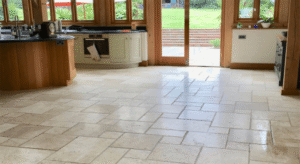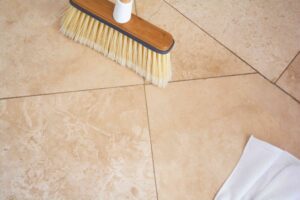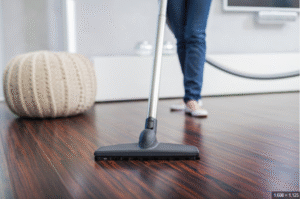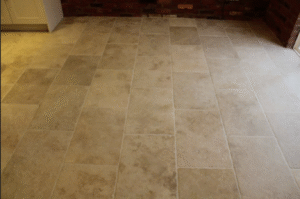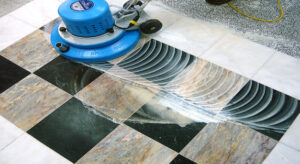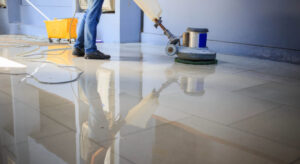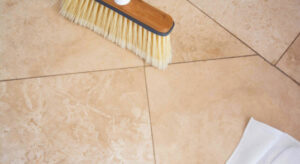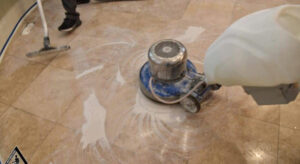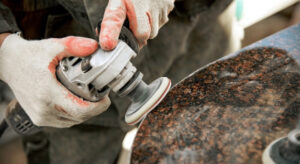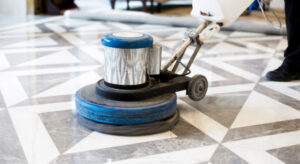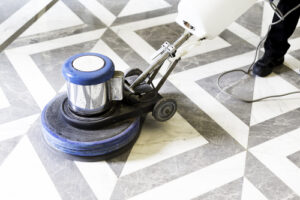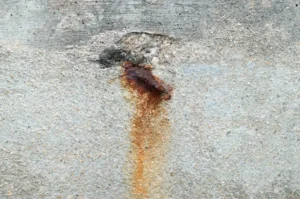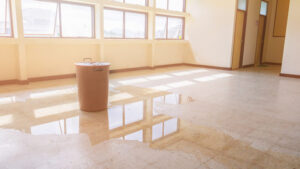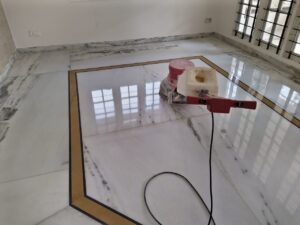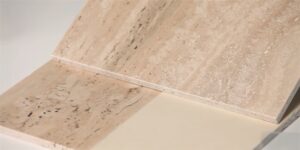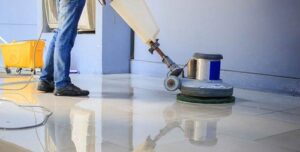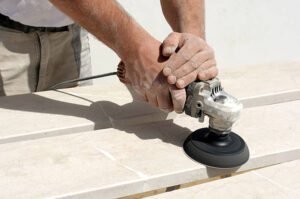Introduction: Why Travertine Tile Restoration Matters
Travertine is one of the most timeless and elegant natural stones used in flooring, countertops, and wall applications. Its soft, earthy tones and classic appeal make it a popular choice for homeowners who value beauty and durability. However, being a porous natural stone, travertine requires special care to maintain its original shine and strength. Over time, it can lose its luster due to foot traffic, spills, and exposure to chemicals, which is why
travertine tile restoration becomes necessary. Restoration helps revive its polished look, smooth surface, and protective seal, but the story doesn’t end there.
The biggest mistake homeowners make after investing in restoration is assuming the tiles are “maintenance-free.” In reality, the restored surface demands consistent care and protection to ensure long-lasting results. When cared for improperly, travertine can develop etching, staining, cracks, or dullness, all of which shorten its lifespan and may require another costly restoration. That’s why understanding the most common mistakes people make after travertine restoration is critical.
This article explores those mistakes in detail, from using harsh cleaning chemicals to neglecting professional maintenance. Each section not only highlights what you should avoid but also provides practical solutions to ensure your restored travertine remains beautiful and functional for years. By the end, you’ll have a clear understanding of the right and wrong ways to treat restored travertine, helping you protect your investment and avoid unnecessary restoration cycles.
1. Using Harsh Cleaning Chemicals
One of the most common mistakes people make with restored travertine tiles is the use of harsh or acidic cleaning solutions. Many homeowners assume that stronger cleaners equal better results, but this mindset is incredibly damaging to natural stone. Substances like vinegar, lemon juice, ammonia, bleach, and acidic bathroom cleaners may seem harmless, but they can cause
etching—a chemical reaction that leaves dull, cloudy spots on the stone’s surface. Once etching occurs, polishing or even professional restoration may be required to reverse the damage.
Another problem with harsh cleaners is that they strip away the sealant applied during
travertine tile restoration. The sealant is a protective barrier designed to keep moisture, dirt, and stains from penetrating the porous surface. If the sealant is compromised, the stone becomes more vulnerable to staining and long-term deterioration. Using abrasive powders or scrubbing pads can also scratch the restored surface, leaving visible marks that ruin the elegant appearance.
The best alternative is to use a pH-neutral stone cleaner specifically designed for travertine and other natural stones. These cleaners effectively remove dirt, grime, and spills without disrupting the sealant or altering the stone’s composition. For everyday cleaning, a simple solution of mild soap and warm water, applied with a soft microfiber cloth or mop, works well. For tough spots, professional stone-safe products are always recommended.
By avoiding harsh chemicals and opting for gentle, stone-friendly alternatives, you ensure that the beauty and durability achieved through restoration are preserved. This small change in your cleaning routine goes a long way in extending the life of your travertine tiles.
2. Ignoring the Sealing Process
Sealing is one of the most critical steps in
travertine tile restoration, yet many homeowners mistakenly believe that once their stone is restored, it will remain permanently protected. Travertine is naturally porous, which means it absorbs liquids and dirt easily if not sealed properly. Without a protective sealant, even something as simple as a spilled glass of juice or coffee can cause permanent stains. Over time, the absence of a sealant also makes the surface more prone to etching, mold, and discoloration.
Another common error is assuming that sealing is a one-time task. In reality, the effectiveness of a sealant diminishes with regular use, foot traffic, and exposure to cleaning agents. On average, most travertine surfaces need to be resealed every 12–18 months, though high-traffic areas may require it more frequently. Skipping resealing not only reduces protection but also shortens the lifespan of the restoration work.
To check if your travertine needs resealing, try the water-drop test: place a few drops of water on the surface. If the stone absorbs the water within a few minutes, it’s time for a reseal. Professional-grade sealants, preferably penetrating or impregnating sealers, should be used for best results. These products seep into the stone and form a barrier that keeps out moisture and stains while still allowing the stone to breathe.
Ultimately, ignoring the sealing process is one of the fastest ways to undo your investment in restoration. By making sealing a regular part of your maintenance plan, you protect your travertine from everyday accidents and environmental wear. Think of sealing as an invisible shield—it doesn’t change the stone’s natural beauty but works silently to preserve it for years to come.
3. Overlooking Regular Cleaning
Restored travertine tiles may look stunning immediately after professional treatment, but that beauty won’t last if regular cleaning is neglected. Many homeowners assume that restoration creates a “set and forget” surface. In reality, dust, dirt, and debris accumulate daily, and because travertine is porous, these particles can slowly work their way into the stone, dulling its polished look and causing scratches over time.
A major mistake is using an inconsistent cleaning schedule. Sweeping or vacuuming only occasionally allows grit to act like sandpaper on the surface, which erodes the finish achieved through
travertine tile restoration. Likewise, ignoring spills or leaving food stains unattended can cause discoloration or etching, especially with acidic substances like wine, citrus juice, or tomato sauce.
To prevent this, establish a routine cleaning habit. Dry sweeping or vacuuming should be done daily in high-traffic areas, and mopping with a damp microfiber mop and pH-neutral cleaner should be performed weekly. Always ensure the mop is slightly damp rather than soaking wet, as excessive water can seep into unsealed pores or wear down the sealant over time. Additionally, placing mats at entrances and rugs in busy areas can reduce the amount of dirt brought into the home.
Another overlooked aspect is grout cleaning. Dirty grout lines can ruin the look of even the most beautifully restored travertine. Using a soft brush and stone-safe cleaner keeps grout free of buildup without damaging the surrounding stone.
By committing to regular, gentle cleaning, you extend the effects of restoration significantly. The key takeaway: while restoration revives your travertine, daily care is what sustains it. Neglecting this step risks sending your tiles back into a cycle of damage, requiring restoration sooner than necessary.
4. Using Abrasive Tools for Cleaning
Travertine is a relatively soft natural stone compared to granite or quartz, which means it is particularly vulnerable to scratches. A common mistake people make after
travertine tile restoration is using abrasive tools for everyday cleaning. Items like steel wool pads, hard-bristle brushes, scouring sponges, or even rough mop heads may seem effective for scrubbing tough dirt, but they actually leave fine scratches on the stone’s surface. Over time, these scratches accumulate, causing the tiles to look dull, uneven, and prematurely worn.
Another issue with abrasive cleaning tools is that they can compromise the sealant layer applied during restoration. Once the sealant is damaged, the stone is more susceptible to absorbing stains and moisture. Homeowners often don’t notice the damage immediately, but as scratches deepen, the travertine begins to lose its polished finish and takes on a cloudy appearance.
Instead, it’s best to use non-abrasive cleaning tools. Microfiber mops and soft cotton cloths are ideal for wiping down tiles. For spills or sticky spots, a sponge with a soft texture and a stone-safe cleaner works perfectly. If you need to tackle grout lines, choose a nylon-bristle brush rather than a metal or stiff-bristle alternative.
For tougher stains, professional cleaning services are recommended rather than trying aggressive scrubbing at home. Professionals have access to stone-safe equipment and methods that clean deeply without damaging the surface.
In short, abrasive tools create more harm than good when it comes to travertine. Protecting your investment means treating your tiles with the same level of gentleness you would apply to fine wood or delicate fabric. The polished look achieved through restoration can only remain intact if you handle the surface carefully during routine cleaning.
5. Ignoring Professional Maintenance After Travertine Tile Restoration
Many homeowners make the mistake of assuming that once they invest in professional
travertine tile restoration, their job is done forever. In reality, travertine is a natural stone that requires ongoing care to maintain its renewed appearance and strength. Ignoring professional maintenance is one of the biggest errors that can lead to dull surfaces, uneven finishes, and even damage over time. While routine cleaning at home is essential, professional stone care experts understand the deeper needs of travertine. They can spot early signs of etching, scratches, or minor cracks that are invisible to the untrained eye but can worsen quickly if left untreated.
Scheduling periodic maintenance appointments ensures that your tiles receive proper resealing, polishing, or honing when needed, which extends their lifespan significantly. Professionals also use specialized cleaning agents and equipment that protect the stone without harming its surface or removing its natural shine. Relying only on DIY methods often leads to overuse of harsh products or abrasive tools, which can undo all the benefits of restoration. Therefore, treating professional maintenance as an ongoing investment rather than a one-time expense is crucial.
Regular checkups by stone care specialists not only save you from costly repairs in the future but also keep your travertine floors, countertops, or walls looking luxurious and elegant for decades. Ignoring professional follow-ups after restoration is like skipping medical checkups after surgery—it risks undoing the progress made.
6. Using the Wrong Cleaning Tools Post-Restoration
Another common mistake after
travertine tile restoration is using the wrong cleaning tools. Many people don’t realize that even seemingly harmless tools like stiff-bristle brushes or scouring pads can scratch the delicate surface of travertine. After restoration, the stone’s surface has been carefully treated to remove imperfections and bring out its natural beauty. Using abrasive tools can undo this hard work by leaving micro-scratches, dull patches, or uneven textures. Even vacuum cleaners with worn wheels or rough bristles can leave behind marks on the tiles.
The best approach is to stick to soft microfiber cloths, non-abrasive mops, or pH-neutral sponges that are gentle yet effective for daily upkeep. Soft brooms can be used for sweeping, but avoid dragging dirt or sand across the surface, as these particles can act like sandpaper. For stubborn spots, it’s better to blot gently with a damp cloth rather than scrubbing harshly. Homeowners also mistakenly use steam cleaners, thinking heat helps with deep cleaning. Unfortunately, excessive steam and heat can weaken the protective seal applied during restoration, making the tiles more vulnerable to moisture and staining.
To prevent damage, always invest in high-quality, stone-safe cleaning tools recommended by professionals. This simple step can make a huge difference in prolonging the results of restoration. By respecting the delicate surface of travertine and avoiding harsh equipment, you can enjoy a long-lasting polished and natural look without the need for frequent re-restoration.
7. Forgetting to Protect Restored Travertine Tiles from Heavy Furniture and Foot Traffic
Travertine tiles, though durable, can suffer damage if not properly protected from heavy furniture and constant foot traffic after
travertine tile restoration. One mistake homeowners often make is dragging chairs, sofas, or tables across freshly restored tiles. This can cause scratches, chips, or dents that ruin the smooth finish. Similarly, high heels or sharp-edged shoes can create etch marks, especially in areas with high activity like living rooms, kitchens, or hallways.
To avoid this, always use protective pads or felt under furniture legs, ensuring they don’t dig into the stone. Rugs and mats placed in high-traffic areas also reduce direct pressure and prevent dust or grit from scratching the surface. Another overlooked issue is pets—claws from cats or dogs can easily scratch tiles if they aren’t trimmed regularly. Additionally, rearranging furniture without proper lifting techniques can undo the restoration work in minutes. Beyond physical damage, heavy traffic can wear down the sealant layer over time, leaving tiles more vulnerable to spills and stains.
Regularly checking and reapplying sealants in these high-use zones is vital to maintain the stone’s resilience. Simple protective measures like rugs, pads, and mindful use of the space can prevent costly damage. After investing in restoration, it’s only logical to guard your travertine against everyday wear and tear. Treat your restored travertine like you would treat a polished car—beautiful but needing care to keep it looking its best despite regular use.
8. Overlooking the Importance of Professional Guidance in Travertine Care
One of the most crucial mistakes people make after
travertine tile restoration is overlooking the importance of professional guidance. While online tutorials and DIY tips provide basic instructions, they cannot replace the expertise of a stone care specialist.
Travertine, being a porous and sensitive natural stone, reacts differently to environmental conditions, cleaning agents, and usage patterns. Professional guidance ensures that you’re using the right cleaning methods, maintenance schedules, and protective measures tailored specifically to your stone’s condition and finish. Many homeowners unknowingly use products labeled “safe for stone” without confirming with experts, only to find out later that they’ve weakened the seal or dulled the surface.
Similarly, professionals can advise you on how often resealing is required, as this varies depending on foot traffic, placement (indoors vs. outdoors), and exposure to moisture. Overlooking expert input often leads to repeated mistakes, requiring more frequent restorations and higher costs. Professional stone care companies also keep up with advancements in tools and products, offering solutions that may not be available in retail stores. For example, specialized impregnating sealers or honing techniques can make a big difference in long-term results.
By neglecting professional advice, you risk shortening the lifespan of your restored tiles. Therefore, maintaining an ongoing relationship with a trusted stone care provider is as important as the restoration itself. Professionals act as partners in preserving your travertine, guiding you toward practices that maintain its elegance, durability, and value for years to come.
9. Skipping Periodic Professional Inspections
One of the most common mistakes homeowners make after
travertine tile restoration is assuming that once the tiles are restored, they will remain in perfect condition forever without any follow-up. This is far from true. Travertine is a porous natural stone that undergoes gradual wear and tear, no matter how carefully it is maintained. Dust, foot traffic, spills, and even air pollutants can affect the quality of its finish over time. Without periodic professional inspections, early signs of damage may go unnoticed, leading to bigger and more costly repairs later.
Professional stone care experts are trained to spot subtle issues such as faint etching, invisible cracks, or weakening grout lines that homeowners may overlook. These small problems, when addressed early, can save you from more extensive
travertine tile restoration in the future. For instance, resealing tiles before the sealant fully wears off keeps the surface resistant to stains and moisture. Similarly, polishing can restore shine before dullness becomes too noticeable.
Think of it like a health check-up—regular visits prevent serious complications. Scheduling professional inspections once or twice a year can maintain the beauty and durability of your restored tiles for decades. Not only does this protect your investment, but it also ensures that your home or business continues to look welcoming and well-maintained. Neglecting this step, however, can undo all the benefits of the original restoration, leaving you frustrated with avoidable expenses.
10. Using Harsh Scrubbing Tools and Techniques
Another critical mistake in caring for
restored travertine tiles is using the wrong cleaning tools or aggressive techniques. Many people assume that scrubbing harder or using stiff brushes will clean stains faster, but with travertine, this approach does more harm than good. The surface of travertine, although durable, is relatively soft compared to other stones. Vigorous scrubbing with steel wool, abrasive pads, or hard-bristle brushes can leave scratches, strip away protective sealants, and create uneven textures.
The same problem occurs when people use high-pressure washing or harsh scouring powders, thinking they will restore shine. In reality, these methods erode the stone’s natural beauty and compromise the work done during
travertine tile restoration. Once the surface is scratched or weakened, dirt and liquids can penetrate more easily, leading to stubborn stains or even structural damage.
Instead, gentle cleaning tools are recommended. Microfiber cloths, soft sponges, or mops are ideal for regular cleaning. For slightly tougher spots, a damp cloth combined with a pH-neutral stone cleaner will do the job without causing harm. It’s also important to blot spills rather than scrub them, as scrubbing can push stains deeper into the stone.
Educating yourself about the proper cleaning tools is just as important as using the right cleaners. By avoiding aggressive scrubbing techniques, you ensure your travertine retains its smooth surface and elegant polish for years. Remember, proper maintenance is about preserving the results of
travertine tile restoration, not undoing them through impatience or rough handling.
11. Ignoring the Role of Humidity and Environment
Caring for restored travertine tiles goes beyond cleaning and sealing; the surrounding environment plays a significant role in how well the tiles hold up over time. One mistake many homeowners make is ignoring the impact of humidity and climate conditions on their floors or walls. Travertine, being a porous stone, naturally absorbs moisture. In humid environments or poorly ventilated areas, this can result in discoloration, mildew, or even mold growth between tiles.
For example, in bathrooms or kitchens where steam and spills are common, restored travertine tiles are more vulnerable if not properly maintained. Even in living rooms or entryways, changes in temperature and indoor humidity can affect the sealant and the structural integrity of the stone. Without proper control, you may soon find yourself needing another round of
travertine tile restoration.
To avoid this, ensure that rooms with travertine tiles are well-ventilated. Installing exhaust fans in bathrooms, using dehumidifiers in humid climates, and maintaining consistent indoor temperatures can greatly extend the life of restored tiles. For outdoor travertine, weather conditions such as heavy rain or frost can also be harmful. In such cases, protective sealants and occasional professional resealing become even more important.
Ignoring environmental factors is like leaving half the job undone. Restoration may bring back the tiles’ shine and strength, but maintaining the right environment ensures that this investment lasts. Paying attention to humidity levels and climate is an essential step in preserving the natural elegance of
restored travertine tiles.
12. Underestimating the Importance of Expert Guidance
Finally, one of the biggest mistakes is underestimating the value of professional expertise after
travertine tile restoration. Many homeowners believe that DIY maintenance tips or occasional cleaning are enough to keep their tiles in top condition. While some routine care can be done independently, expert advice ensures that your approach is tailored specifically to your stone’s needs.
Travertine varies in quality, porosity, and finish depending on its type and origin. A one-size-fits-all cleaning or care method may not be suitable. Professionals provide customized guidance, such as the correct type of sealant for your environment, the ideal cleaning frequency, or the best way to handle accidental spills. Without this guidance, you may unknowingly shorten the lifespan of your tiles or compromise their appearance.
Expert services also include specialized polishing, honing, and resealing that cannot be effectively replicated with consumer-grade products. By relying solely on DIY methods, you risk leaving your travertine dull, stained, or vulnerable to damage. Investing in periodic consultations with a trusted stone care specialist ensures that your restored tiles not only maintain their elegance but also increase in longevity and value.
In essence,
travertine tile restoration is not just about the initial work; it’s about ongoing care with the right knowledge and support. Underestimating the importance of professional guidance often results in repeated mistakes and higher costs in the long run. A partnership with experts ensures your travertine tiles remain as beautiful and durable as the day they were restored.
Conclusion: Preserving the Lasting Beauty of Restored Travertine Tiles
Travertine is a timeless natural stone that adds elegance, warmth, and character to any space. When professionally restored, it reveals its unique charm with smooth finishes, polished textures, and vibrant patterns. However, the value of
travertine tile restoration lies not just in the immediate results but in the care and maintenance that follow. Homeowners often underestimate how even small mistakes—such as using harsh cleaners or neglecting routine upkeep—can undo months of meticulous restoration work.
Throughout this guide, we’ve explored twelve common mistakes that can compromise the appearance, strength, and longevity of restored travertine tiles. From overusing acidic or abrasive cleaners, skipping proper sealing, and ignoring grout maintenance, to failing to protect against heavy traffic or overlooking seasonal factors, each mistake contributes to premature wear and unnecessary expenses. These aren’t simply careless oversights; they are practical gaps in knowledge that many homeowners encounter when balancing busy lives with proper tile care.
The good news? Every one of these mistakes can be avoided with consistent, mindful maintenance. By adopting preventive practices—like sealing regularly, using felt pads under furniture, sweeping daily, and sticking to pH-neutral cleaners—you can dramatically extend the life and beauty of your restored travertine surfaces. Equally important is the willingness to rely on professionals when needed. Scheduling periodic expert maintenance may feel like an added cost, but it pays off by delaying the need for major restorations and preserving the natural appeal of your flooring or countertops for years to come.
Another key takeaway is the importance of understanding travertine’s natural vulnerabilities. Unlike synthetic tiles, travertine is porous and sensitive. This means it thrives under gentle care and protective measures rather than aggressive cleaning or neglect. Whether you’re dealing with indoor floors, shower walls, or outdoor patios, the same principle applies: respect the stone’s unique nature and it will reward you with long-lasting elegance.
Finally, always remember that your environment plays a role in determining the level of care required. High-traffic homes, areas with pets, or regions with extreme humidity or seasonal weather shifts demand more proactive measures. Adjusting your maintenance routines to your specific lifestyle and surroundings ensures that your travertine surfaces remain resilient under varying conditions.
In essence,
travertine tile restoration isn’t just a one-time process—it’s the beginning of a cycle of mindful care. By learning from the mistakes outlined in this guide and adopting preventive habits, you safeguard your investment while enjoying the timeless beauty of natural stone in your home. Think of restoration as giving your travertine a second chance to shine, and your ongoing maintenance as the promise that this beauty will endure for generations.
So, whether you’ve just completed a restoration project or are planning one soon, commit to avoiding these pitfalls. With consistency, the right products, professional guidance, and an awareness of your environment, your travertine tiles can remain as stunning as the day they were first restored. After all, true beauty isn’t only in the restoration itself but in the care that ensures it lasts.

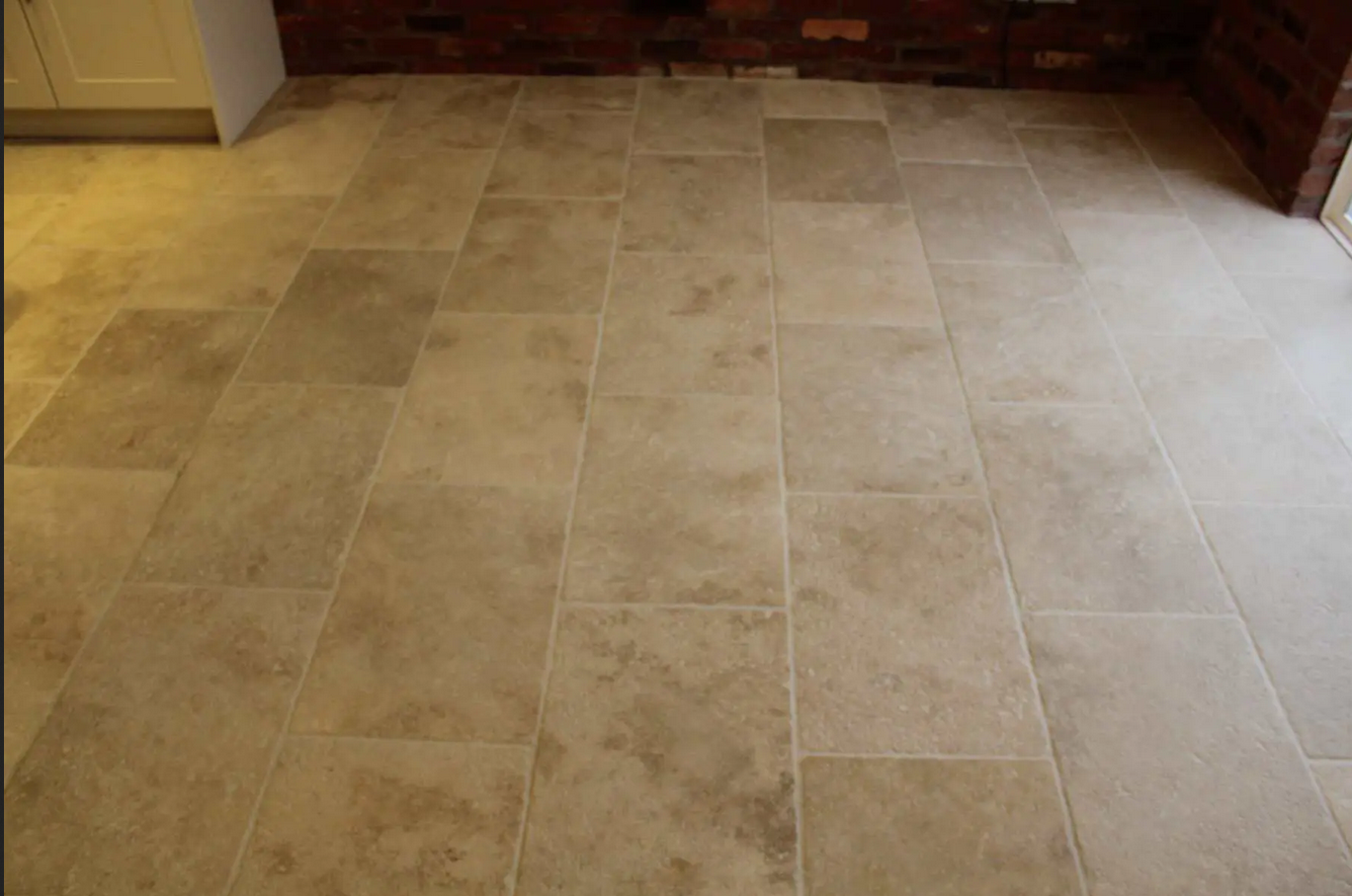

 .
.

